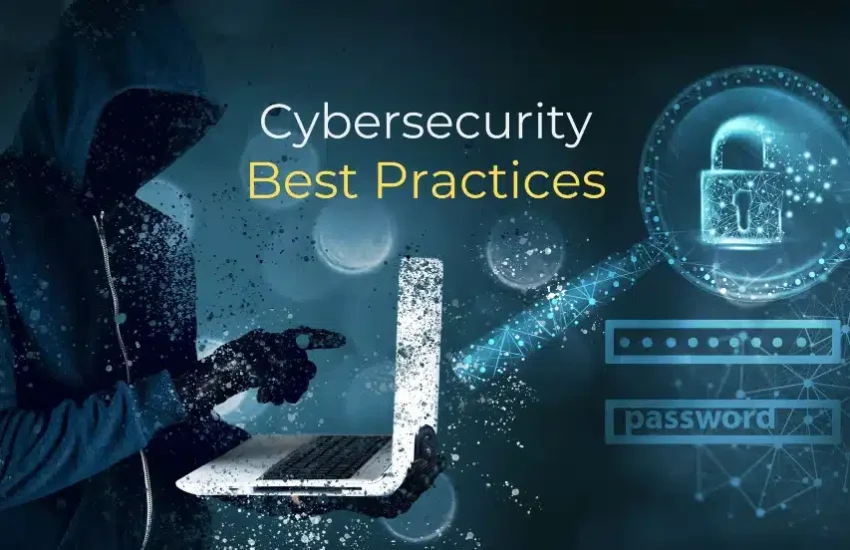In today’s digital landscape, cyberattacks are more sophisticated than ever. From phishing emails to ransomware and insider threats, organizations and individuals alike face growing risks. Implementing cybersecurity best practices is no longer optional—it’s essential. This guide covers proven cybersecurity strategies to strengthen your defenses, safeguard your data, and ensure business continuity.
Whether you’re a small business, large enterprise, or an individual concerned about digital safety, adopting the right habits can prevent catastrophic breaches. Cybersecurity best practices empower you to stay one step ahead of hackers and protect what matters most.
1. Use Strong, Unique Passwords and Multi-Factor Authentication
One of the simplest yet most effective cybersecurity best practices is creating strong passwords. Use a combination of letters, numbers, and special characters, and avoid using the same password across multiple accounts.
Implement multi-factor authentication (MFA) for all accounts, especially those with administrative access. MFA adds an extra layer of security by requiring users to verify their identity using two or more factors.
2. Keep Software and Systems Up to Date
Regular software updates are critical for patching security vulnerabilities. Cybercriminals often exploit outdated systems to gain unauthorized access.
Ensure that:
- Operating systems are updated
- Applications receive security patches
- Firewalls and antivirus software are current
By following this cybersecurity best practice, you reduce your exposure to known vulnerabilities.
3. Secure Your Network Infrastructure
Network security is foundational to protecting data flow between devices. Use firewalls, VPNs, and intrusion detection systems to monitor and control traffic.
Best practices include:
- Changing default router credentials
- Encrypting Wi-Fi connections
- Segregating guest networks
Network security helps keep attackers from penetrating deeper into your environment.
4. Backup Your Data Regularly
Data protection is crucial in the event of ransomware attacks, system crashes, or accidental deletion. Establish regular, automated backups that are stored off-site or in the cloud.
Follow the 3-2-1 backup rule:
- Keep 3 copies of your data
- Store data in 2 different formats
- Maintain 1 off-site backup
This strategy ensures your business can recover quickly after a data loss event.
5. Educate Employees and End Users
Human error is the leading cause of data breaches. Invest in cybersecurity awareness training for your team to recognize:
- Phishing emails
- Social engineering tactics
- Malicious downloads
Well-informed employees are your first line of defense against cyberattacks.
6. Monitor for Threats Continuously
Advanced cyber threat detection tools enable real-time monitoring of your IT systems. These tools alert you to unusual activities or unauthorized access.
Key features to implement include:
- Behavioral analytics
- Threat intelligence feeds
- Security incident and event management (SIEM)
Early detection enables a swift response to minimize damage.
7. Protect All Endpoints
Laptops, smartphones, and other devices must be secured to prevent unauthorized access. Endpoint protection software ensures that each device meets security standards.
Make sure to:
- Enforce mobile device management (MDM)
- Encrypt data on portable devices
- Use antivirus and anti-malware software
Comprehensive endpoint protection strengthens your organization’s overall cybersecurity posture.
8. Limit Access to Sensitive Data
Restricting access to sensitive files reduces the chance of internal misuse or accidental leaks. Use the principle of least privilege (PoLP) to grant users only the access they need.
You can enhance data protection by:
- Implementing role-based access control (RBAC)
- Auditing access logs
- Encrypting data at rest and in transit
9. Have an Incident Response Plan
Even with all precautions, breaches can still occur. Develop a clear incident response plan that outlines:
- Roles and responsibilities
- Communication protocols
- Recovery procedures
This plan ensures your organization can act quickly to mitigate damage and resume operations.
10. Secure Your Digital Transformation Journey
Businesses adopting cloud and remote technologies must prioritize digital safety. Secure cloud services, remote access solutions, and collaboration platforms using:
- Identity and access management (IAM)
- Cloud workload protection platforms (CWPP)
- Secure APIs and encryption
As you embrace innovation, ensure security evolves with your digital landscape.
How We Can Help You
At Sentinel Cyber Defender, we specialize in providing end-to-end cybersecurity solutions tailored to your unique needs. From network security to endpoint protection and cyber threat detection, our certified experts help you identify vulnerabilities, implement strong defenses, and stay compliant with industry standards.
We offer:
- 24/7 real-time monitoring
- Custom security consulting
- Strong authentication systems
- Cloud and on-premises protection
- Regulatory compliance support (GDPR, ISO 27001, NIST)
Let us help you stay secure in an ever-changing digital world. Contact us today to get your free consultation or begin your 12-day free trial.
Conclusion
Implementing cybersecurity best practices is a proactive way to secure your business, data, and reputation. By using strong passwords, securing networks, educating employees, and deploying modern threat detection tools, you can build a resilient digital environment.
At Sentinel Cyber Defender, we bring deep expertise in cybersecurity best practices to ensure your systems remain secure and compliant. Whether you’re starting your security journey or looking to optimize your current setup, we are here to support you every step of the way.

